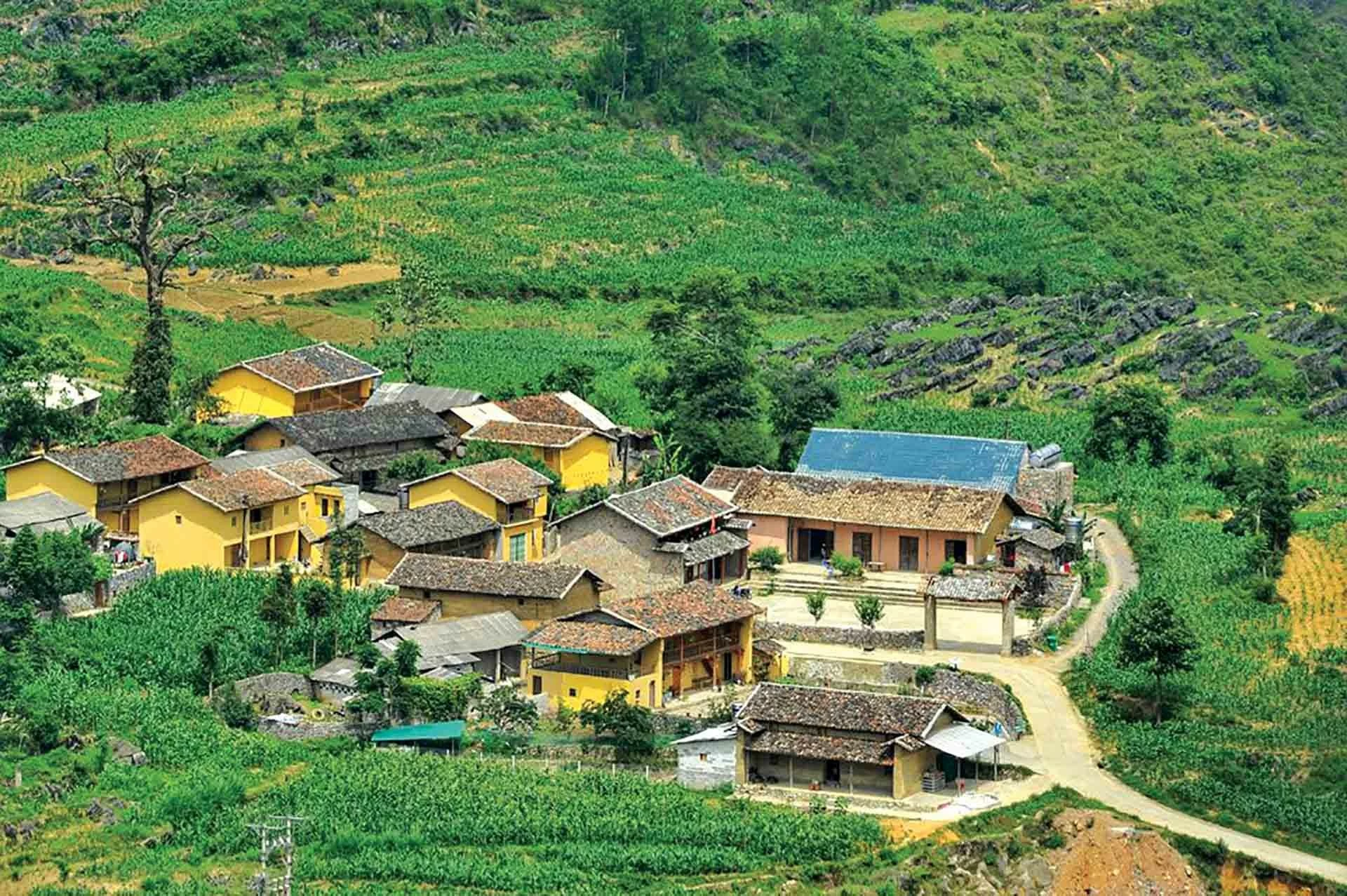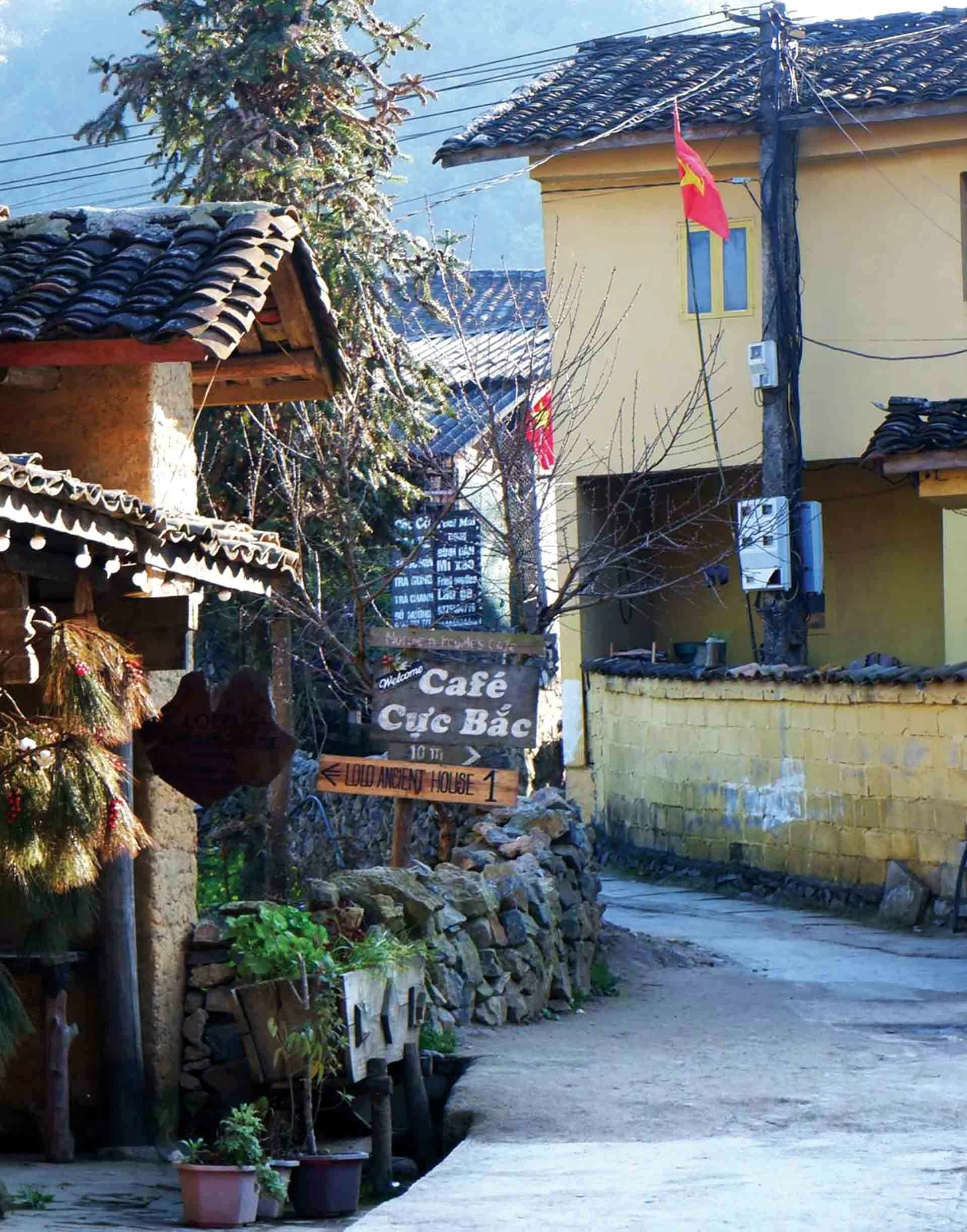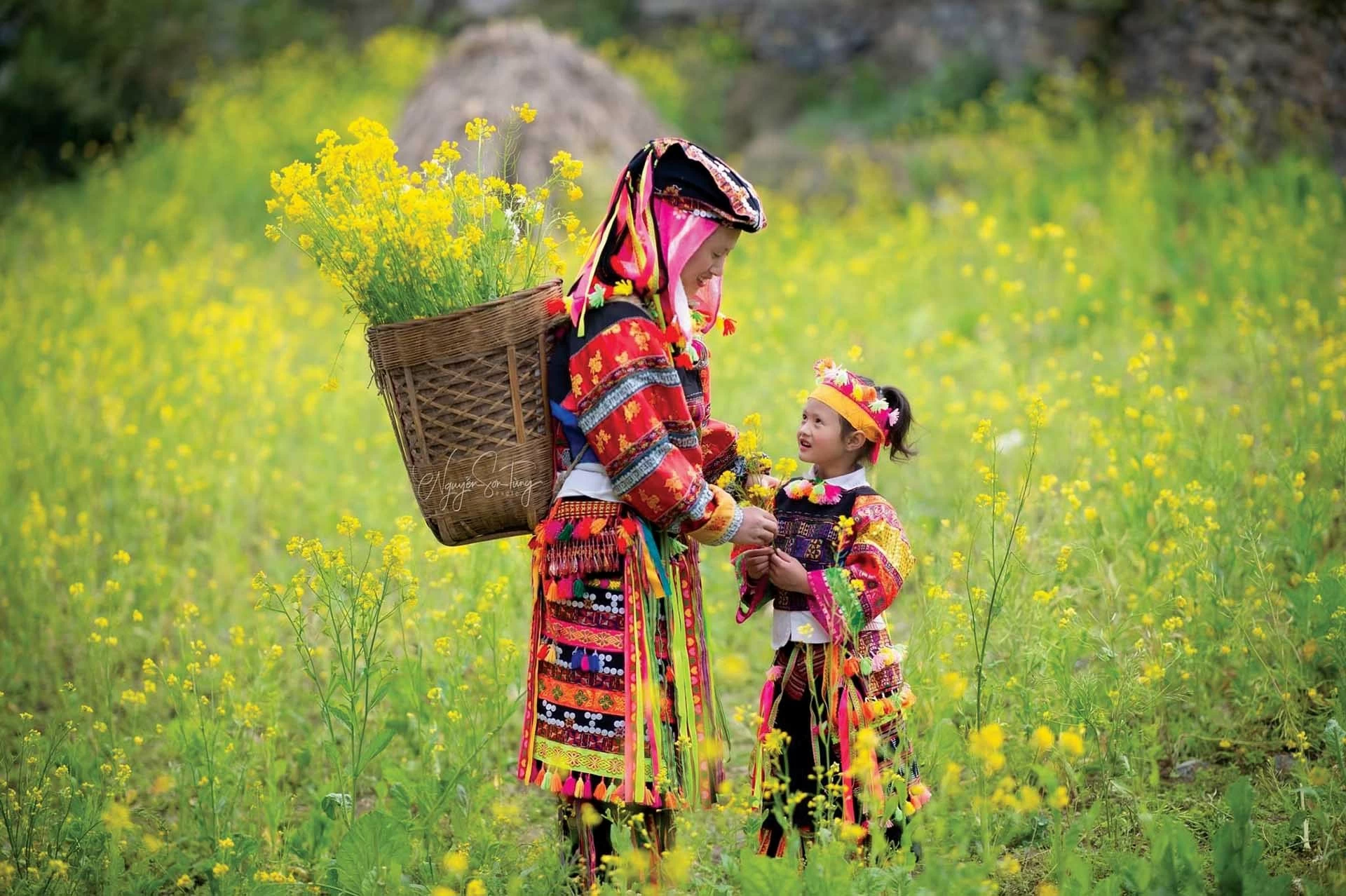
Lo Lo Chai - A peaceful village at the northernmost tip
Latest
 |
| Lo Lo Chai village is situated at the foot of the Lung Cu flagpole. (Photo: ivivu) |
To reach Lo Lo Chai, we had to overcome a challenging journey. From Ha Giang city center, we traveled 150 km through mountain passes to reach the Dong Van Plateau, but the journey to Lo Lo Chai involved an even more challenging mountain road, flanked on one side by steep rocky mountains and on the other by deep valleys.
Approaching the Lung Cu flagpole, instead of going straight, we turned left and followed a winding dirt road for about 1.5 km to reach Lo Lo Chai, home to over 100 H'Mong and Lo Lo families who have lived on the beautiful Dong Van Plateau for decades.
A Fairy-tale land
Nestled among the windy highlands, Lo Lo Chai resembles a fairy-tale land, peaceful to an unusual extent, unlike the bustling atmosphere at the Lung Cu flagpole. From the beginning of the village, you can see the distinctive stone houses typical of the Ha Giang Plateau.
The tile-roofed houses are closely nestled together, creating a simple, tranquil scene. The cracked and weathered walls have become a unique feature of the ancient villages on the stone plateau. Along the village road, locals plant lots of mustard and peach flowers, so the village is always vibrant with colors.
Situated at the extreme northern point of the country, Lo Lo Chai has developed into a community tourism village on the Ha Giang Plateau. From any location in Lo Lo Chai, you can see the Lung Cu flagpole perched on the distant Long Son Peak peeking through the clouds.
Lo Lo Chai is home to over 100 households, predominantly Lô Lô people along with the H'Mong and Dao ethnic groups. Previously, the locals primarily engaged in slash-and-burn agriculture, but given the harsh conditions of the stone plateau, they barely made a subsistence living. From its advantageous location at the nation’s northern tip, the locals have developed a community tourism model and now live more prosperously.
| On average, this small village welcomes about 1,000 tourists each month to stay and explore. Particularly towards the end of the year during the buckwheat flower season, the homestays are always "fully booked", demonstrating the attraction and tourism potential of Lo Lo Chai. |
With the advantage of stone houses (warm in winter, cool in summer), the people of Lo Lo Chai have redesigned and renovated their homes into charming, convenient homestays for visitors to explore and experience the community culture of the Lô Lô people. Currently, there are about 37 stone houses in Lo Lo Chai, most of which have been transformed into highly popular homestays.
We had a wonderful overnight experience at the Binh Yen Homestay run by a young couple, Quay Sinh Di and Lò Bích Poi.
In the evening, everyone gathered outside for a bonfire, roasting corn and potatoes, and singing under the flickering flames, watching the Lung Cu flagpole above. Despite being young, this couple has preserved their ethnic identity. Mrs. Poi always wears the beautiful and graceful attire of the Lo Lo people.
Outside their stone house is a charming drinks table decorated in the Lo Lo style for guests to enjoy and sip coffee or tea in the early morning. This young couple also frequently connects to the internet, creating personal Facebook pages to promote their homestay. As a result, many domestic and international tourists know about their homestay, and it is always fully booked.
In each month, Lo Lo Chai welcomes about 1,000 tourists to stay and visit. Especially at the end of the year during the buckwheat flower season, the homestays are always in a "full house" situation, demonstrating the allure and tourism potential of this small village at the country's northernmost point. Now, in journeys to conquer the extreme north of the country, missing out on Lo Lo Chai means missing out on unique experiences.
 |
| Directional sign to the Northernmost Café. (Photo: Vi Yen) |
The Northernmost café
A must-visit spot for photo enthusiasts when visiting is the Northernmost Café. What could be better than enjoying a cup of coffee at the northernmost point of the country, or simply snapping a photo next to the café’s sign, which amusingly has a mistranslation in English (Northern People’s café, when it should be Northern Pole's café)?
Located in the middle of the village, the Northernmost Café is set in a traditional stone house with simple wooden furniture, soft background music, and an open, welcoming atmosphere. Guests can come in and stay to sip on coffee, soft drinks, or just to look around. The owner always greets guests with a smile. Honestly, while the coffee here isn't outstanding, the unique geographical location and setting make it feel particularly special.
From the entrance of the village, you can see the characteristic stone houses of the Ha Giang Plateau. The roofs of these houses are closely stacked together, creating a serene and peaceful landscape.
The café was established by a Japanese tourist named Yasushi Ogura. During his days in Vietnam, and particularly in Lung Cu, he fell in love with the nature and people here, and decided to develop a coffee model right in this northernmost village. All the facilities, from the furniture to the drink preparation techniques and customer service, were meticulously guided by him to the local people, helping Lo Lo Chai.
 |
| Bright yellow mustard flowers in Lo Lo Chai. (Photo: L.A) |
For those looking to escape the hustle and bustle of urban life, especially those following the current "healing" trend, Lo Lo Chai is an ideal destination. Beyond the serene scenery and unhurried lifestyle, you are always warmly welcomed by the locals of Lo Lo Chai as if you are a long-lost relative returning home. Walking around this village at the far end of the country, you always feel a profound sense of relaxation. Almost all tourists here, including international visitors, are friendly. Our days exploring the northernmost point of the country were memorable, and we look forward to returning.













